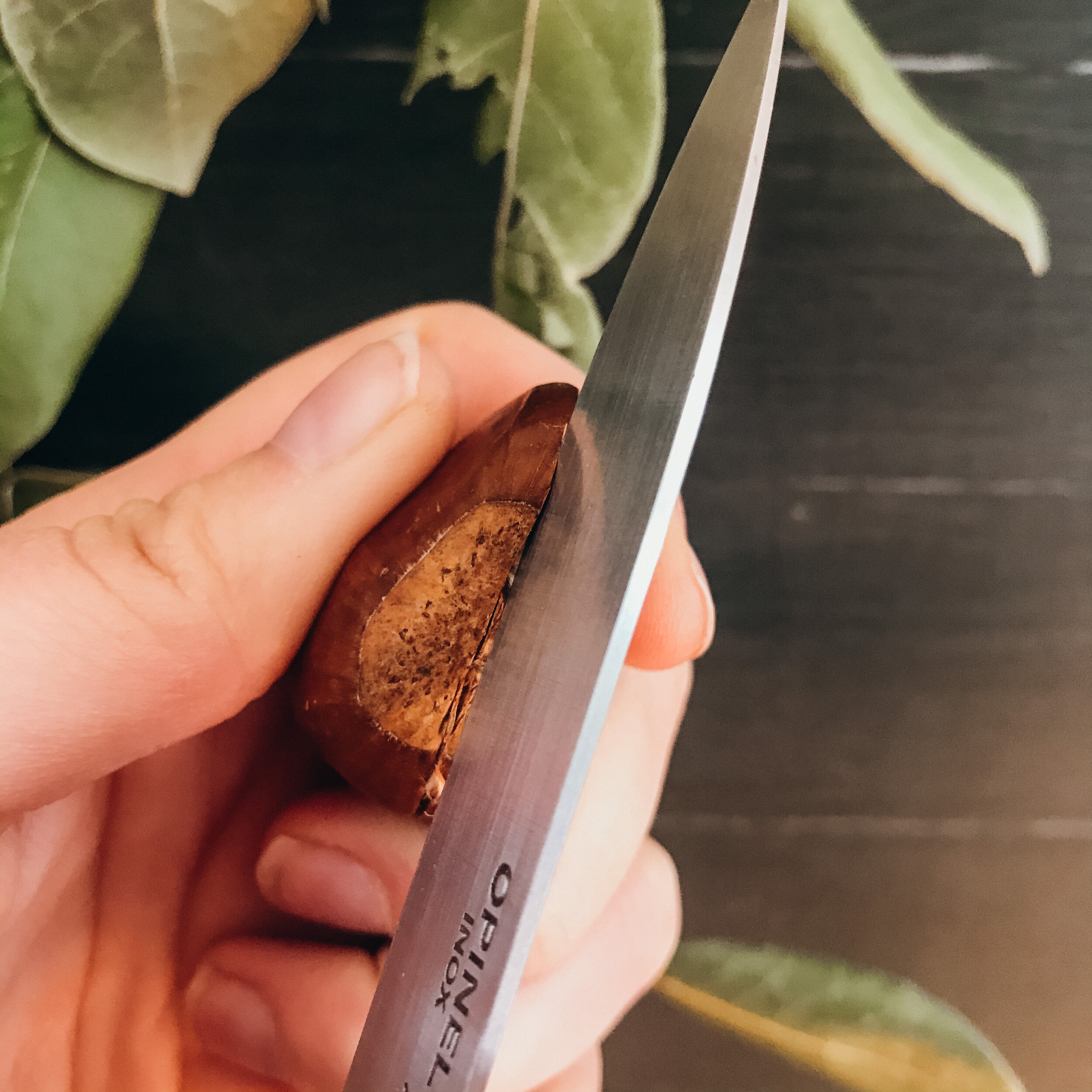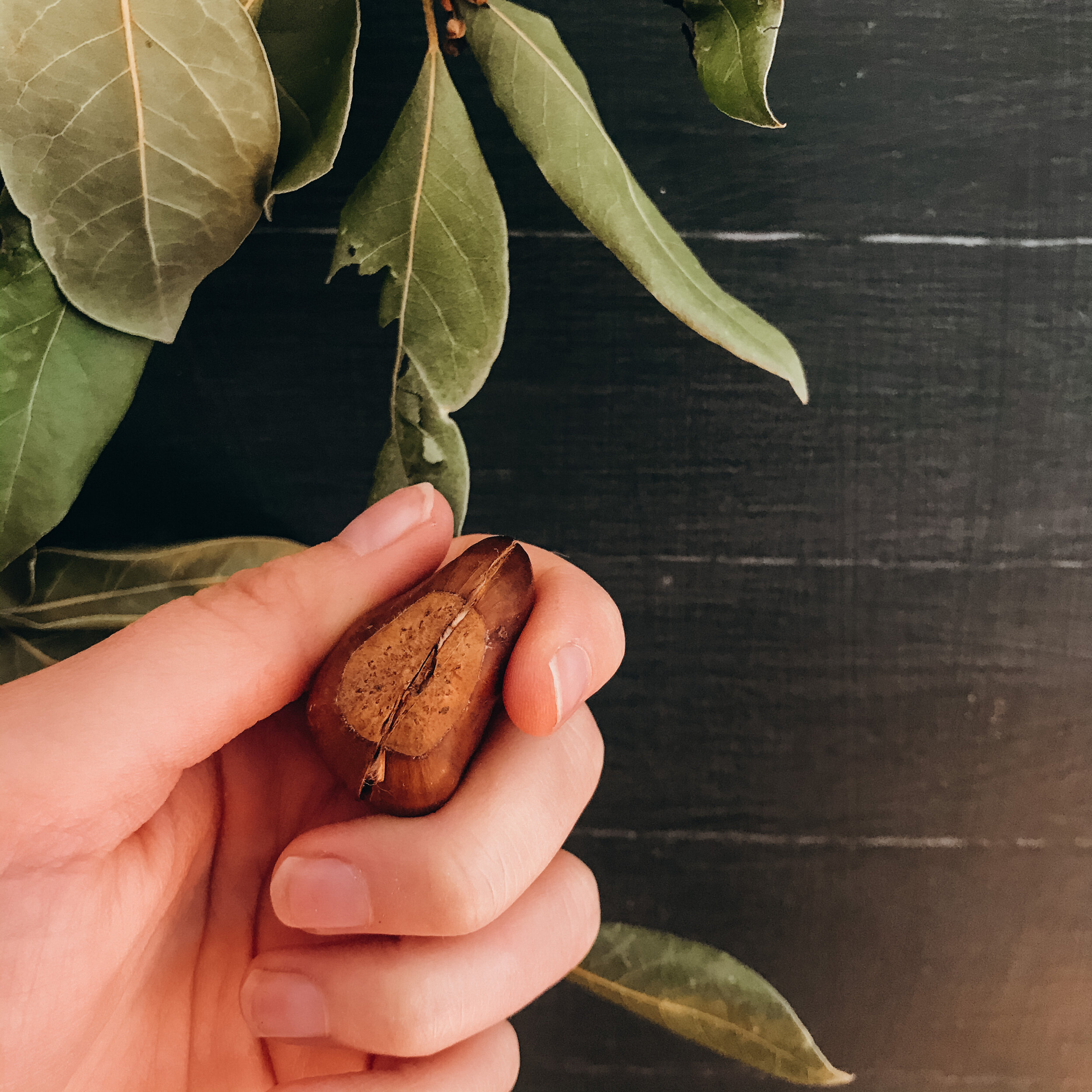Chestnut Jam
Today we have a detailed post on how to make your own chestnut jam. This is the perfect holiday treat, but it takes a lot of patience and love to make it. We promise it’s worth it! Tag us on Facebook or Instagram (@summersintheardeche) if you recreate this recipe.
Aujourd'hui, nous partageons avec vous la recette détaillé pour faire votre confiture de marrons. C'est le régal parfait pour les vacances, mais il faut beaucoup de patience et d'amour pour réaliser cette confiture. Nous vous promettons que ça vaut le coup! Taguez-nous sur Facebook ou Instagram (@summersintheardeche) si vous recréez cette recette.
English Instructions
Ingredients
1 kg of chestnuts
400g of granulated sugar
1 Vanilla bean
Recipe
Whether you buy your chestnuts at the store or harvest them yourself, you must always sort through them and remove the chestnuts that are rotten. To do so, fill a large bowl with cold water and add a handful of chestnuts. The chestnuts that float to the top are rotten and may be thrown out or composted. The chestnuts that sink to the bottom are perfect and may be removed from the water and set aside. Repeat this process with all your chestnuts.
Dry your chestnuts, and then with a sharp knife make a small cut or nick around the chestnut (see photos below for directions). This part of the recipe takes patience, but it’s worth it as it is very difficult to remove the shell and skin from the chestnuts. While you are doing this, boil a large pot of water.
Add the nicked chestnuts to the pot of boiling water for about 3 minutes. This allows the shell and skin to remove itself from the chestnut without completely cooking the fruit. Remove the chestnuts from the hot water after several minutes, and the shells should have popped open by themselves. Be careful during this step, because the chestnuts can be very hot when removing them from the boiling water. Hopefully, it will be easy to peel away the first and second layers. If some of the fruits still have the second layer use a knife to remove it or replunge the chestnuts in the boiling water for an extra minute. Repeat this step until all your chestnuts are peeled.
Put the chestnuts in a clean pot, and cover with water. Bring to a boil, and let simmer for about 30 minutes. You want the chestnuts to be tender but not completely cooked. Strain the chestnuts, but keep the cooking water.
Purée the chestnuts with 100ml of the cooking water. You can do this with a blender, food processor, or a stick blender.
Pour another 100ml into a separate pot, and add the sugar. Slowly heat until the sugar is dissolved, and then add the chestnut purée and the vanilla paste from the vanilla bean. Stir well until blended. Bring to a boil, and let simmer for about 10 minutes until the jam thickens. Remove from heat, and add to sterilized jars and seal immediately.
Directions en français
Ingrédients
1kg Châtaignes
400g Sucre
1 Gousse De Vanille
Recette
Que vous achetiez vos châtaignes en magasin ou que vous les récoltiez vous-même, vous devez toujours les trier et enlever les châtaignes qui sont pourries. Pour ce faire, remplissez un grand bol d'eau froide et ajoutez une poignée de châtaignes. Les châtaignes qui flottent vers le haut sont pourries et peuvent être jetées ou compostées. Les châtaignes qui coulent au fond sont parfaites et peuvent être retirées de l'eau et mises de côté. Répétez ce processus avec toutes vos châtaignes.
Séchez vos châtaignes, puis avec un couteau bien aiguisé, faites une fente dans la châtaigne (voir les photos ci-dessous pour les directions). Cette partie de la recette demande de la patience, mais cela en vaut la peine car il est parfois difficile de retirer l’ecorse et la seconde peau des châtaignes. Pendant que vos faites cela, faites bouillir une grande casserole d'eau.
Ajouter les châtaignes taillées dans la casserole d'eau bouillante pendant environ 3 minutes. Cela permetra de retirer l’écorse et à la seconde peau de vos châtaignes sans cuire complètement les fruits. Retirez les châtaignes de l'eau chaude après plusieurs minutes. Soyez prudent lors de cette étape, car les châtaignes peuvent être très chaudes en les sortant de l'eau bouillante. . Si certains des fruits ont encore la deuxième peau, utilisez un couteau pour la retirer ou replongez les châtaignes dans l'eau bouillante pendant une minute supplémentaire. Répétez cette étape jusqu'à ce que toutes vos châtaignes soient épluchées.
Mettez les châtaignes dans une casserole propre et couvrez d'eau. Porter à ébullition et laisser mijoter environ 30 minutes. Vous voulez que les châtaignes soient tendres mais pas complètement cuites. Égouttez les châtaignes, mais gardez l'eau de cuisson.
Réduisez les châtaignes en purée avec 100 ml d'eau de cuisson. Vous pouvez le faire avec un mixeur, un robot culinaire ou un mixeur plongeant.
Versez encore 100 ml dans une casserole séparée et ajoutez le sucre. Faites chauffer lentement jusqu'à dissolution du sucre, puis ajoutez la purée de châtaignes et la gousse de vanille. Remuez bien jusqu'à homogénéité. Porter à ébullition et laisser mijoter environ 10 minutes jusqu'à ce que la confiture épaississe. Retirer du feu, ajouter aux bocaux stérilisés et sceller immédiatement.









